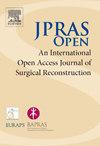Prevalence of lower extremity edema following inguinal lymphadenectomy: A systematic review and meta-analysis
IF 1.5
Q3 SURGERY
引用次数: 0
Abstract
Background
Lower extremity lymphedema (LEL) can develop because of inguinal lymph node dissection in the treatment of gynecologic, genitourinary, and dermatological malignancies. To optimize patient counseling and patient selection for microsurgical interventions aimed at preventing or treating LEL, its prevalence and associated patient characteristics must be accurately documented. This systematic review and meta-analysis provides a comprehensive overview of literature on the reported prevalence of LEL in patients undergoing inguinal lymphadenectomy.
Methods
From Embase, PubMed, and Web of Science databases, 23 studies were identified that met the inclusion criteria. This review was conducted in accordance with the preferred reporting items for systematic reviews and meta-analyses guidelines. Risk of bias was assessed using the Risk of Bias in Non-randomized Studies-of Exposure tool.
Results
Random-effects meta-analyses of proportions estimated a 24% (95% confidence interval [CI]: 17-31) pooled prevalence of LEL with a high degree of heterogeneity between the studies (I2=96%, p < 0.01). Subgroup analysis revealed significant differences in LEL prevalence based on the indications for inguinal lymphadenectomy. The pooled LEL prevalence was 25.75% (95% CI: 0.00-96.16) for patients who underwent lymphadenectomy for melanoma, 12.22% (95% CI: 1.03-23.40) for penile cancer, 30.96% (95% CI: 21.08-40.84) for vulvar cancer, and 13.62% (95% CI: 0.00-51.02) for miscellaneous indications.
Conclusion
The findings from this study emphasize the importance of considering malignancy etiology when assessing the risk of LEL following inguinal lymphadenectomy. This knowledge could aid physicians in informing patients about the risk of LEL, while also facilitating proper patient selection for microsurgical interventions.
腹股沟淋巴结切除术后下肢水肿的患病率:一项系统回顾和荟萃分析。
背景:在妇科、泌尿生殖系统和皮肤恶性肿瘤的治疗中,腹股沟淋巴结清扫可导致下肢淋巴水肿(LEL)。为了优化患者咨询和选择旨在预防或治疗LEL的显微外科干预措施,必须准确记录其患病率和相关患者特征。本系统综述和荟萃分析提供了关于腹股沟淋巴结切除术患者LEL患病率的文献综述。方法:从Embase、PubMed和Web of Science数据库中筛选出23项符合纳入标准的研究。本综述按照系统评价和荟萃分析指南的首选报告项目进行。使用非随机暴露研究的偏倚风险评估偏倚风险。结果:比例随机效应荟萃分析估计LEL的总患病率为24%(95%可信区间[CI]: 17-31),研究之间存在高度异质性(I2 =96%, p < 0.01)。亚组分析显示,基于腹股沟淋巴结切除术的适应症,LEL患病率有显著差异。接受淋巴结切除术的黑色素瘤患者的LEL总患病率为25.75% (95% CI: 0.00-96.16),阴茎癌为12.22% (95% CI: 1.03-23.40),外阴癌为30.96% (95% CI: 21.08-40.84),其他适应症为13.62% (95% CI: 0.00-51.02)。结论:本研究的结果强调了在评估腹股沟淋巴结切除术后LEL风险时考虑恶性病因的重要性。这些知识可以帮助医生告知患者LEL的风险,同时也有助于患者正确选择显微手术干预措施。
本文章由计算机程序翻译,如有差异,请以英文原文为准。
求助全文
约1分钟内获得全文
求助全文
来源期刊

JPRAS Open
Medicine-Surgery
CiteScore
1.60
自引率
0.00%
发文量
89
审稿时长
22 weeks
期刊介绍:
JPRAS Open is an international, open access journal dedicated to publishing case reports, short communications, and full-length articles. JPRAS Open will provide the most current source of information and references in plastic, reconstructive & aesthetic surgery. The Journal is based on the continued need to improve surgical care by providing highlights in general reconstructive surgery; cleft lip, palate and craniofacial surgery; head and neck surgery; skin cancer; breast surgery; hand surgery; lower limb trauma; burns; and aesthetic surgery. The Journal will provide authors with fast publication times.
 求助内容:
求助内容: 应助结果提醒方式:
应助结果提醒方式:


